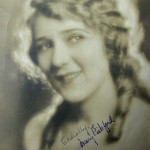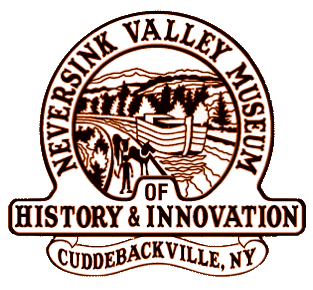Movies Before Hollywood:
A Legacy of Film Making in the Tri-State Area

During the period of 1895 to 1910, New York City was the capital of film production and distribution. New York City was the natural center for film making because of the availability of acting talent, props, theatrical expertise and money. Many of these early film companies were only in existence for a few years or even only a few months, then going bankrupt or merging with another company.
Location Filming
Most of the film companies based in New York City between 1895 and 1912 and even later, shot the interior scenes for their films in established film studios, and shot the exterior scenes at numerous outdoor locations throughout the area. All film companies went out on location for filming exterior scenes, and they utilized many surrounding areas and especially Fort Lee, New Jersey. Fort Lee was an ideal place to film because it was easily and cheaply reached by a ten-cent ferry ride from 125th Street in Manhattan.
Film companies soon tired of using the Fort Lee area exclusively, and sought other areas for new location filming. Trips of a few days or even a few weeks were taken to predetermined locations, and in this short time, three or more films could be made. In Orange County, the small hamlet of Cuddebackville was a favorite and well used location.
Cuddebackville
Cuddebackville was a favorite and fondly remembered spot for location filming. The Biograph Company came here in 1909, 1910 and 1911. The Victor Film Company, with Florence Lawrence, filmed here in 1912, the Pathe Freres Company with Pearl White (star of The Perils of Pauline) stayed here during May and June of 1912. The Thanhauser Motion Picture Company filmed The Forest Rose in Cuddebackville in 1912. In 1913, a small film company named GEM also filmed in Cuddebackville.
When working for the Biograph Company, D.W. Griffith brought the film company to Cuddebackville on six separate occasions, three times in 1909, twice in 1910 and once in 1911.
In 1916 Griffith Recalled: “I discovered Cuddybackville [sic], the most beautiful, altogether the loveliest spot in America…There is a quality about the light there, particularly a twilight that I have never found elsewhere; it is transcendently illuminative for [moving] pictures.”
Photoplay June – November 1916
Fade to Black:
“It was here at Cuddiebackville [sic] that the first “fade” or blackout was used. Pictures formerly came to a sudden stop at the end of every scene. This always annoyed me, so one day I tried an experiment. Taking a cigar box, I had it placed in front of the camera lens. The lid of the box was lifted gradually before the lens so that when the scene was projected on the screen, instead of that sudden stop – it faded off. The picture in which this effect was first used was The Last of the Mohicans [sic, the film was “leatherstocking” based on “Mohicans”], starring Mary Pickford and Owen Moore.
“Later we had a metal iris made by the local blacksmith in Cuddiebackville and discarded the cigar box. Some of the studio heads did not like this effect. Either, complaining that is used up extra film, but the idea was soon generally adopted, and the dissolve is used today in every picture.”
D.W. Griffith, “The Man Who Invented Hollywood”
Some of the other notable people who worked here are: G.W. “Billy Bitzer” Mary Pickford, Owen Moore, Mack Sennett, James Kirkwood, Florence Lawrence, Mabel Normand, Dorothy and Lillian Gish, James Young Dear. Companies that filmed here include Biograph, Pathe Freres, and Thanhouser.
Twenty films were completed, which utilized the beautiful unspoiled natural surroundings for breathtaking location shots for Indian and western films, historical dramas and even comedies. Cuddebackville had everything needed to make films, varied scenic possibilities, housing facilities and it was accessible by train from New York City. D.W. Griffith felt that the canal, Neversink River, nearby rocky cliffs and the colonial stone houses were perfect for films.
The Caudebec Inn was located on Oakland Valley Road a short distance from Route 209 on the left side of the road facing the D&H Canal freight basin. It was a summer hotel that could hold approximately eighty guests at capacity, which included some guests sleeping on cots in the halls. During this early film making period, it was known as an inn popular with New York City businessmen, politicians and of course, film companies.
The Noel Mackisoc Film Collection
Thanks to the generosity of Mr. Mackisoc and his family and the supporters of the NVAM, we have been able to obtain this collection of more than 350 films that date to 1931 and before. We offer lectures, screenings and are building a library of films, books and artifacts pertaining to early motion picture making. Screenings and lectures are listed under the “Events” page. For more information, please contact the museum.
Films known to have been made in Cuddebackville:
- The Indian Runner’s Romance, American Biograph 1909
- The Mended Lute, American Biograph 1909
- The Hessian Renegades or 1776, American Biograph 1909
- The Little Darling, American Biograph 1909
- In Old Kentucky, American Biograph 1909
- Muggsy Becomes A Hero, American Biograph 1909
- Comata the Sioux, American Biograph 1909
- A Fair Exchange, American Biograph 1909
- Leather Stocking, American Biograph 1909
- Fools of Fate, American Biograph 1909
- Mountaineers Honor, American Biograph 1909
- In Life’s Cycle, American Biograph 1910
- Willful Peggy, American Biograph 1910
- A Summer Idyll, American Biograph 1910
- The Modern Prodigal, American Biograph 1910
- That Chink at Golden Gulch, American Biograph 1910
- The Broken Doll, American Biograph 1910
- The Gold Necklace, American Biograph 1910
- The Revenue Man and the Girl, American Biograph 1911
- The Squaw’s Love, American Biograph 1911
- The Forest Rose, Thanhouser 1912
Short Link:
